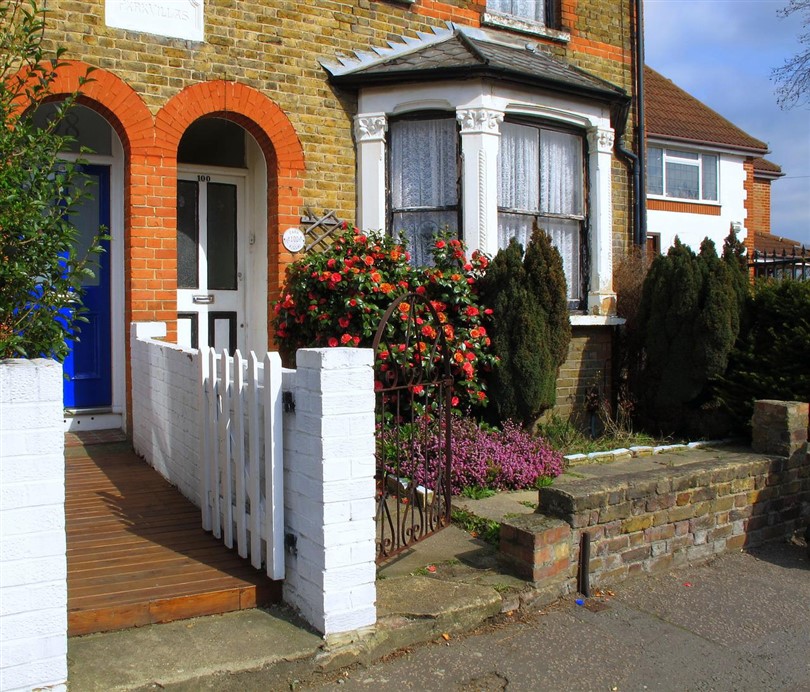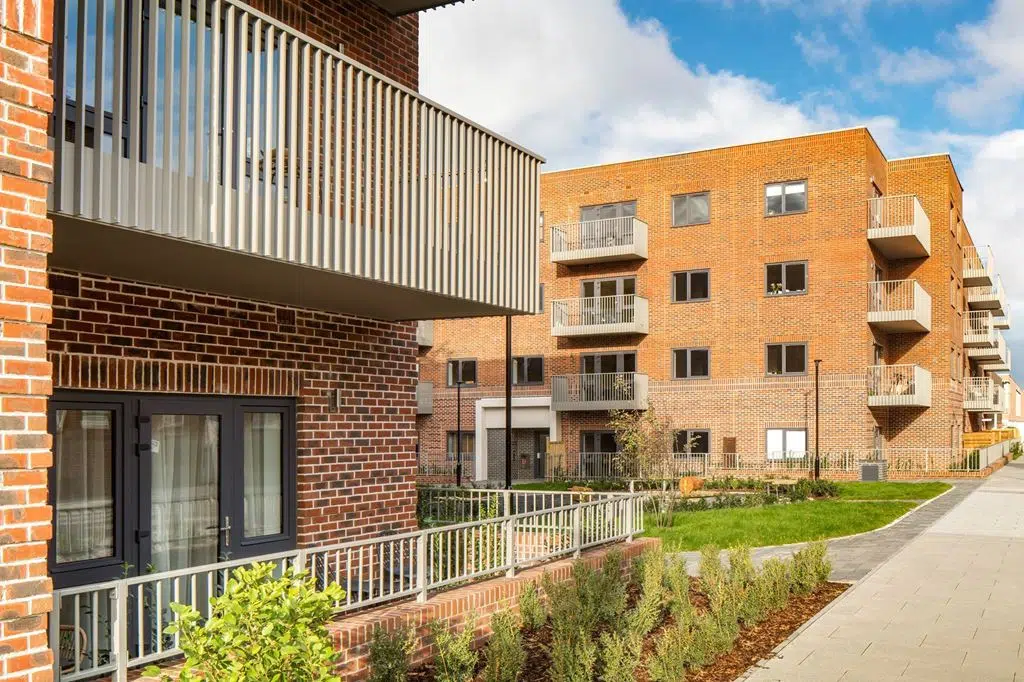Buy-to-let property investment is a popular way to generate income. However, buying property to rent out requires more research than buying property for yourself to live in. Here we provide detailed information about the advantages of limited companies, how to set up a limited company, the disadvantages, and more.
Buy to Let Explained Companies Explained
In recent years, the trend across the buy-to-let sector has been to use limited companies to build a sustainable portfolio. The vast majority of landlords operate through limited companies, so if you are looking for more from your property business in the long run, it makes sense to follow this path. Limited companies are often thought to be complex and challenging to maintain. While there are a few additional duties, they can be easily integrated into your business plan and are relatively easy to manage. It takes just 15 minutes to set up a buy-to-let company online. Companies House registration costs just £12 if you do it online or by mail.
Is Rental Property a Good Investment
For the uninitiated, buying a property to rent out can be a complex and time-consuming process. If you are serious about rental property investment, it’s worth understanding the different routes you can take into the property market. As well as the more obvious route of buying to let (and then renting out rooms or a house), there are alternatives to consider – such as buying yourself a plot of land and building your own home from scratch and then renting it out (a “build-to-rent” property).
Renting out a property is still one of the best ways to secure your financial future if you plan your investment correctly. Buy-to-let investors have doubled their average returns in the last seven years as property prices have risen dramatically; however, many investors are unaware that many tax breaks are still available. For example, if you are a higher rate taxpayer, you could use the wear and tear allowance to reduce tax on rental profits. You could also offset previous losses and the property’s value loss against the future.
Investment properties now incur a 3% stamp duty surcharge. In addition, all mortgage interest payments cannot be deducted from income tax on rent, and they have higher capital gains tax bills than most investments.
Property investors who operate via a limited company can benefit from the lower corporation tax rate. A landlord can still be entitled to full deductions for mortgage interest by operating via a limited company. Additionally, landlords who invest in property through a Limited Company can take advantage of a reduced corporation tax rate of 19% instead of the higher income tax rate of 40%. These changes could see landlords receive a net saving of 37% or more.
Earning an Income from Rent is Key
When investing in buy-to-let properties, prospective investors should consider the yield. Property has long been seen as a secure investment. Price increases in the property market have given buy-to-let investing the potential to boost returns in recent years, but the long-term appeal of buy-to-let investing comes from rental income. Rental yield is the annual percentage return on the purchase price. A yearly rental income of £10,000 would be generated by a 5% gross yield on a £200,000 property. The UK rental yield is 5.9%.
Investing for House Price Gains
Nationwide’s house price index showed the average UK property price 40 years ago was £23,730. When you look at these various facts and figures, it is difficult to deny that investing in property is a sure-fire money-spinner. As property prices have continued to rise and the return on your initial investment has continued to improve, the value of buy to let properties has soared. This steady rise means that many people have been able to turn their property investment into a sizeable fortune. Even during periods of recession, buy to let investment has remained popular thanks to the ease with which tenants can be sourced.
Compared to a decade ago, the average house price has risen from £83,976 to £162,379 over the past two decades. That kind of growth may be limited in the future because house prices are near their highest level ever, while wages and mortgage rates are already at historic lows. As long as there is a demand for properties, people will always be willing to buy them. As demand increases, so will the buyer and seller prices.
What is a Property Company for Buy-to-let?
Incorporation refers to setting up a limited company for your buy-to-let portfolio. If you’re a landlord, you can buy your properties as an individual and pay income tax or as a limited company and pay corporation tax. Limited companies that own properties also receive rental income differently. As a result, you can take a salary or dividends from the limited company. In addition to setting up a company, you have to register with Companies House, register for PAYE (if you want to pay yourself a salary), and keep your accounts up to date.
Should you Set up a Limited Company to Buy a Property?
One of the main reasons people decide to buy property as an investment is to generate an income. Rental income is an attractive source of income, mainly from buy-to-let investors who don’t have to pay tax on their earnings. By incorporating and selling your buy-to-let property through a limited company, you can minimise your property tax charges and any capital gains tax payable, as profits are taxed at corporation tax rates instead of personal rates. Even if you’re a higher-rate taxpayer, you may be able to claim back all your business expenses against your rental income via a government-approved tax relief scheme, which could help you save thousands on your tax bill.
Incorporating gives you more control over your property and is less hassle than renting. Your rent will be lower, and you’ll have more choices with your property, such as selling, refinancing or renting out. You could grow your business by acquiring other properties or buildings or doing a buy-to-let mortgage, even if you don’t have a considerable amount of savings.
Benefits of Incorporation
1: Tax benefit
Many people are put off by the perceived complication of buying a property through a limited company or personal service company. Still, they fail to understand the tax benefits that this structure offers. Using a company or personal service company to purchase a property allows you to pay corporation tax at the current rate of 19% instead of the higher income tax rate paid by the individual. If you are a higher rate taxpayer, this could save you considerable money.
2: Income withdrawal on a flexible basis
Limited companies only pay tax on their profits. With a single trader or partnership, the business pays tax on its profits, whether there are profits or not. This means that single traders and partnerships are paying tax on their losses. And if the business is losing money, this can be a big problem.
3: Mortgage relief
Private landlords cannot deduct mortgage interest charges from rental income. Instead, they receive a tax credit equal to 20% of their mortgage interest payments. As the credit only refunds basic rate tax on mortgage payments, higher-rate taxpayers will not receive a full refund. For limited companies, mortgage interest is classified as a business expense, meaning that you can deduct the cost before paying corporation tax.
4: Tax planning
Tax planning is easier for companies than for individuals. Options include using a family investment company, forming limited liability partnerships, or extracting tax-free benefits, which can help reduce overall tax liabilities. Many families of high net worth are concerned about preserving their assets for their children and future generations. They do this by transferring assets to children via an intergenerational family investment vehicle (including a trust), often reducing or eliminating estate/inheritance taxes.
Inheritance Tax Planning
If you plan to pass on your property portfolio to your children or other family members, then purchasing property through your limited company would be a great way to avoid hefty inheritance tax.Transferring a business to a family member via shares or gifts is easier to accomplish. If the company is worth millions, the shares and/or gifts will have to be valued and documented legally. It is also an advantage for the family to be involved in the business and, therefore, be motivated to keep the business running smoothly.
Stamp Duty
The stamp duty on the sale of shares is 0.5%. Therefore, selling shares instead of property may give you better bargaining power. In some instances, SDLT can be reduced by 15%.
Limited Liability (Reduced Risk)
Having a company helps you legally protect your assets/liabilities; in other words, it protects your assets from any claims by creditors or other people.
Small Self-Administered Scheme (SSAS) pensions
Companies can open SSAS accounts for investment purposes. SSAS accounts are taxed differently than other types of investments. You get tax relief when you pay into an SSAS account. A commercial or residential scheme can be structured to meet specific investment requirements by considering future capital expenditure requirements, cash flows, and returns.
Downsides of Incorporation
- Landlords with limited companies have more responsibilities, including filing taxes and accounts
- Getting a buy-to-let mortgage for a limited company is more challenging, even though the number of products has increased in recent years
- It costs money to switch to a limited company, and if you take profits out of the company, you have to pay income tax
- You may need specialist advice from a broker or accountant, which could cost more and take longer
How to set up a Property Company
To set up your own limited company with a company name of your choice, you’ll need to make sure the name is available with Companies House and register with Companies House via the Government Gateway website. You’ll also need to provide information about shareholders and directors and what your business does. This defines the activities of a company and affects its liability to tax.
Once your company has been created, you’ll need to set up a business bank account and register to pay corporation tax. This can seem daunting, but tax experts give invaluable hints to simplify the process.
An accountant usually manages a property company, so you’ll only need to file annual returns and confirmation statements. However, if you’re running the company yourself, make sure you know all your responsibilities and costs. If you’re a landlord with multiple properties, a property company may be the best choice.
If you’re paying an accountant to manage your lettings business for you, you’ll still have to register with the tax office. Your accountant will be able to tell you what taxes you must pay, such as VAT, corporation tax and capital gains tax, and advise you on what records to keep.
What is a Buy-to-let Mortgage, and How do they Work?
A landlord taking out a buy to let mortgage has several options. Most lenders offer an interest-only deal or a more standard repayment mortgage. Buy to let mortgages usually require a higher deposit than traditional mortgages, and interest paid on the mortgage is generally higher. A rent guarantee may be required, and the mortgage will usually be secured against the property. Lenders may now charge a higher interest rate for buy to let properties than for owner-occupied properties.
A buy-to-let property is an investment that can open up a range of financial opportunities and give you the freedom to live the lifestyle you wish to lead. Most first-time buyers can only dream of owning their own home; however, this dream can be a reality with help from a buy-to-let mortgage. At the same time, investing in a buy-to-let property can provide you with a regular income that will help you reach your retirement goals faster. Some lending institutions consider rentals of less than six months per year to be short-term rentals, and some believe a short-term rental property is a second home. Make sure you understand how your buy-to-let mortgage works before you start renting out the property, as the lender may limit your eligibility.
How they’re Different to Residential Mortgages
A buy-to-let mortgage is a loan taken out to buy a property to let out to tenants. Because the rental fees cover the loan repayments, lenders are more relaxed about letting borrowers borrow more than they would with a residential property mortgage. In addition, lenders calculate how much you can borrow based on rental income at a set level – rather than your current income. Lenders are not relaxed about the other criteria and usually want evidence of a suitable deposit and sometimes a deposit of multiple monthly rental incomes.
The customer’s income determines a residential mortgage’s affordability. Some BTL lenders factor in personal income in their affordability calculations, but the deciding factor is usually rental income. Buy-to-let mortgages can also have higher interest rates and deposit requirements. Fair treatment of buy-to-let mortgages by mortgage lenders has often been much debate in recent years. Many lenders are keen to let borrowers borrow the maximum amount they can. Still, borrowers need to be careful not to over-stretch themselves, particularly when some lenders are hiking their BTL rates. Last but not least, unlike residential mortgages, buy-to-let mortgages are not regulated by the Financial Conduct Authority (FCA).
Do I Need a Buy-to-let Mortgage?
If you want to buy a rental property and need a mortgage, you will need a buy-to-let mortgage. Buy-to-let mortgages usually require a higher deposit than residential mortgages, and lenders often lend only 75% of the property value rather than 80% or more generally required for residential properties. This is because lenders apply different and often stricter lending criteria to buy-to-let mortgages than residential mortgages.
Buy-to-let Repayment Mortgages
To keep their overheads low and save money on taxes, most landlords choose interest-only buy-to-let mortgages. If you want to chip away at your debt each month, you can choose a capital repayment mortgage. You’ll make higher monthly payments, but you’ll own the property after the term.
Restrictions Landlords Need to Know About
A landlord cannot live in a buy-to-let property without permission from their lenders, and even if they did, it would likely mean switching to a different product type. Furthermore, 2021 is the first full year when landlords can’t deduct mortgage expenses. They’re instead entitled to a 20% tax credit on interest payments.
How Much can I Borrow?
Your buy-to-let property’s rental income dictates how much lenders are willing to lend. You should anticipate at least 25% more rental income than your monthly mortgage repayments. These factors determine how much you can borrow from a lender. This additional coverage may be as high as 45% to ensure you can afford a buy-to-let property. The sky is pretty much the limit if you can demonstrate that your buy-to-let property’s rental income can service the mortgage debt. Many lenders have minimum personal income requirements and won’t approve you for a buy-to-let mortgage unless you’re earning over a certain amount from other sources, regardless of whether your investment property is self-funded. £25,000 in proven earnings is a typical figure.
Is a Buy-to-let Mortgage Worth it?
An investment with a buy-to-let mortgage can be lucrative, but it might be difficult to resell the investment property in the future (the main benefit of a buy-to-let mortgage). Talk to a mortgage broker about the pros and cons of a buy-to-let mortgage before you act.
How do Buy-to-let Mortgages Work?
Most buy-to-let mortgages are interest-only. You’ll only pay the interest and no capital for each month of the mortgage term. Short-term, you can minimise your monthly outgoings, but you must have a plan to either pay off the loan or refinance at the end of your term.
Buy-to-let Mortgages for First-time Buyers
First-time buyers can get a buy-to-let mortgage – but it’s not easy. Fewer mortgages are available to investors, so that you may need a larger deposit. Additionally, you’ll lose out on some first-time buyer advantages. For first-time buyers, if you don’t live in your first property, first-time buyer relief isn’t available. The ‘home mover rate’ will apply instead, which is the same rate that a non-first-time buyer would pay for a residence to live in. Buying a home to live in later while holding onto your buy-to-let property will incur the full buy-to-let/second home surcharge. Additionally, lenders will assess any outstanding debt on your buy-to-let mortgage when you buy your first home to live in yourself.
How many Buy-to-let Mortgages Can You Have?
Landlords with four or more properties are called portfolio landlords. As a result of the Bank of England rules in October 2017, these investors found it more challenging to access additional finance. In the past, portfolio landlords could supply their profit/loss figures when applying to borrow more money or remortgage a home in their portfolio. It may be harder to obtain extra funds if your portfolio is heavily mortgaged. When applying for finance, you’ll need to show mortgage details, cash flow projections, and business models.
Maximum Portfolio Size and ICR increases
Some lenders impose additional restrictions on portfolio landlords. Depending on how many properties you have, some lenders have a maximum number you can have in your portfolio (up to 10 is most common). In contrast, others use different ICRs and representative interest rates. Lenders may also impose limits on maximum loan-to-value (LTV) ratios across a portfolio (for example, 65% LTV or less) or a requirement that all properties in a portfolio have the same internal capital ratio (ICR).
Buy-to-let tax Changes – what do you need to know?
The tax changes of April 2017 have led to many landlords incorporating their portfolios. Until April 2017, you could deduct 100 per cent of mortgage interest from rental income, leaving landlords with a favourable tax bill.
In April 2020, the government phased out buy-to-let mortgage tax relief, replacing it with a 20 per cent tax credit. Landlords who pay income tax will no longer be able to deduct costs from their tax bill and only receive 20 per cent of their mortgage interest costs.
Buy-to-let Tax Relief for Landlords
Depending on your circumstances, you may save a lot of money. The main tax relief is to claim mortgage interest as a business expense if your portfolio is run through a limited company. If you’re a higher or additional rate taxpayer, limited company ownership may lower your taxes. You may also be able to mitigate inheritance tax relief if you plan to hand down your property to a family member.
Corporate Tax Rates Versus Individual Tax Rates
The rate for landlords who own their properties is 20% between £12,571 and £50,270 and 40% between £50,271 and £150,000. Income over £150,000 has an additional rate of 45 percent. The personal allowance (up to £12,570) and higher rate threshold will remain the same until 2026 after changes in April 2021. The main corporation tax rate is 19 percent and has been since 2017. By April 2023, the top corporate tax rate will increase to 25% (on profits over £250,000).
Capital Gains Tax on Buy-to-let Property
If a landlord sells their property, they will have to pay capital gains tax (CGT) above the current allowance of £12,300. If you own your property through a limited company, you won’t have to pay CGT, but you will have to pay corporation tax since it’s considered ‘making a profit. Depending on how much profit you expect from the sale, paying CGT (and benefit from the tax-free allowance) or corporation tax is cheaper.
How to Run a Successful Buy-to-Let Business
Buying and renting properties can be very risky. The more knowledge you acquire before investing in property, the more likely it is that it will pay off.
Research the Market
Invest in property with open eyes and be aware of the disadvantages and benefits. Follow relevant social media accounts and frequent property news to keep up to date on everything related to investing to be more successful at your Buy-to-Let business. When you stay on top of rental yields and potential growth in different areas, you can decide where to invest.
Find the Right Location
Renters have certain things in mind when looking for a location because you need to know what they want. Invest in a property near a railway station or Tube station, which is more appealing to London professionals. Are there schools, green spaces and restaurants nearby where you are considering investing? These are all other essential aspects that you should consider because they are part of your property’s value. Regeneration areas are great Buy-to-Let locations as they’re cheaper than Central London. Capital growth still guarantees a profit.
Hire a Good Letting Agent
When you have determined where you intend to make your Buy-to-Let investment, hiring a reputable letting agent is next. The importance of this step in a successful Buy-to-Let business cannot be overstated. A property is a big job with many responsibilities, including tenants, health and safety regulations, fire safety laws, and the list goes on. You can put yourself at ease and make everything seem less overwhelming by working with a letting agent. To guarantee a more stress-free and professional experience, ensure your letting agent is registered with the Association of Residential Letting Agents.
Landlord Insurance
Consider these factors when buying landlord insurance. Ensure that your insurance policy includes public liability coverage to claim if faulty fittings or inadequate repairs cause the damage. The importance of this step cannot be overstated. You are ultimately responsible for your property and its tenants even if you hire an agent.
Be Prepared
Last but not least, you need to be prepared for anything that may come your way after investing in property. Your tenants won’t be afraid to contact you at dawn with emergencies like lost keys and broken boilers. Making some reliable connections, such as handymen, will make your life easier in this case. They will be happy to fix any problems as soon as possible. To ensure you are never caught off guard, make an emergency fund and set aside a minimum of 10% of your rent per month for necessary repairs. At least every six months, check on your property and if there is a small problem, fix it before it turns into an even bigger issue; this will help keep your property and tenants happy. If you want to keep your tenants long-term, you cannot just forget about your property after you have invested in it and found your tenants.















